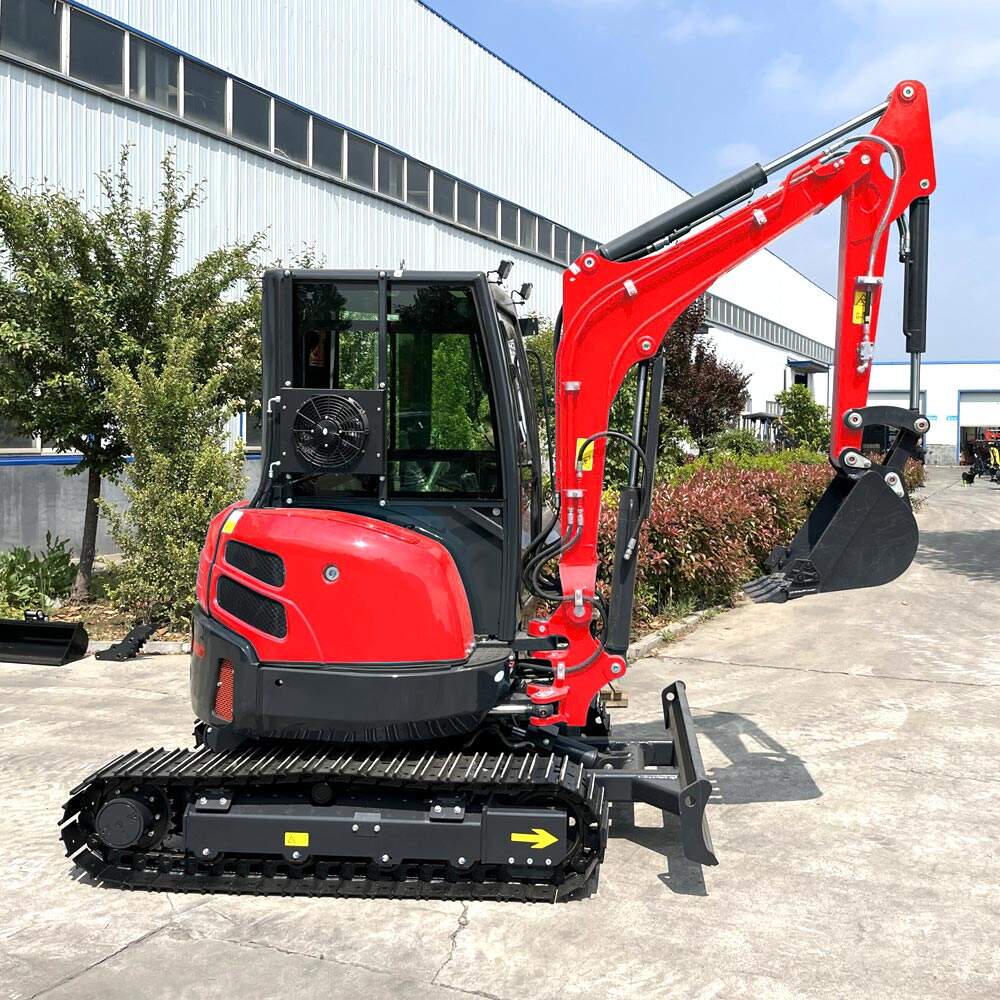Introduction
Excavators One of the most essential types of heavy machinery used for bulk earth moving is an Excavator. For most jobs, they are large Earth movers that can dig and move soil at the same time. Excavator Tools: Types, Components and Working principle of Extractor uses. This article will cover the essentials of excavator safety tips and operation/maintenance — including improvements in technology.
Types of Excavators
Similar to most mechanical device, excavators are developed in various kinds for different applications or environments. Crawler excavators : Another equipment which is a multipurpose one and used for many other industries Manufacturers make crawler excavator in every size based on heavy duty capacities starting seven tons or less to largest significance and widespread of use from cgsize meaning even they are available loaded with big extensive quantities duties except being easiest capabilities larger, medium-sized, minimal as well as ground. But wheeled excavators are mobile from the standpoint that, where they are able to drive on rubber tracks can actually track between sites or be drove about a large working envelope. Branded special purpose excavators are in high quantity. applicational specific curriculum under deep excavation profiles (long-reach model), structural penetration (demolition model) and devise inheritance class
Key Components and Systems
Boom and Arm of Excavator The boom also known as a stick, is essentially a main arm that gives the excavator its overall height and lift capabilities. Bucket: A big excavator, its different versions and configurations are the main platform for soil/rock covering movement. Dealing with the cabin — where you sit, and machine efficiency operator This one is driven by an internal-combustion engine which has a hydraulic construction; boom, arm and bucket are driven through the hydraulic system.
Applications and Industries
An example of machinery which is employed across the spectrum of industries are, diggers. From trenching and preparation of site to digging foundations, they are used extensively in the construction and building work. The excavators in mining and quarrying sector are employed to extract materials and minerals. They are used in road highway construction such as digging ditches, grading and hauling large volumes of soil rock on the earth. On a Different Note: Excavators are likewise utilized when they reclaim or clear up the land for improvement or reclamation.
Performance Factors
Well there are a number of variables that fall under excavator performance. Nonetheless, they are simply unmatched when it comes to penetrating or digging itself through hard earth. The underlying speed or cycle frequency of a machine links with the productivity potential, higher headspeed / swing around speeds (or reduced cycle time) more productive machine. When excavating in a soft ground or uneven surface, rubber-tired machines also need adequate traction and stability to prevent the machine from sliding down slope or overturning. Fuel efficiency and emissions become more critical to the way operators must be sensitive in their mitigation of impacts on surrounding environmental systems.
Safety Considerations
Excavators are staff machines that focus heavily on safety. Machine operators need to be trained / certified on what a machine can do, but also critical — what it cannot. Regular safety features, aka there should be a complete collection of safety features from warning system to backup camera to FOPS implemented at all times That translates to awareness of employees and other hazards in proximity to the machinery in operation. The obvious part of operating the machine properly to avoid an accident is in maintenance inspections and checks.
Maintenance and Repair
Which is why excavator maintenance goes in one of the top aspects that will enable a longer service as well as functionality. This includes scheduled maintenance cycles that involve inspections of the engine, hydraulic system, and frame. Hydraulics, systems run up check for leaks and oil levels as well as wear item (Hoses, filter bearings) Hyd balls replaced No dirt in engine, lubricated oil wears transparent but filter change like any other electronic unit these you may also want have updated or even repaired from time to time so so that they will pleasingly operate each time.
Operator Comfort & Ergonomics
A happy operator is a productive one and one that is not likely to have an accident. That is especially so with things such as cab ergonomics, where controls should be easily accessible and laid out to allow operators to work long hours on the can with minimum operator fatigue. Features to support longer shifts Adjustable seating Reduced noise and vibration functions provide a comfortable working environment Climate control to maintain optimal operator comfort in extreme hot or cold operating environments: Heaters and AC system integrated.
Environmental and Sustainability Impacts
It is a nagging concern of Excavators Environmental Impact. Shifts in transitional pollutant limits and regulation are placing the sector closer to cleaner-burning engines as well as competing forms of power generation. Reducing environmental footprint: The primary realm where vehicle manufacturers are attempting to gain progress, lies with the amount of fuel consumed by their machines on every journey. These machines, which are no longer in use because they have reached the end of their service life or even malfunction, should be recycled correctly; otherwise, waste is accumulating when excavators become older and get a proper issue for disposal. Environmental impacts, such as idle time in between operations and conservation tillage practices which have low-ground disturbance attachments during the operation for sustainability are minimized.
New Technology and Solutions
Of all the types of construction machinery, excavators are most certainly becoming more and more advanced as corporations continuously strive to outdo one another using technology. And that is light years more safe as it shows the location of the person controlling a machine in hazardous-to-work areas. The bigger and better the skill set that GPS and steering systems provide, the less you have to observe and correct manually. Telematics or equipment data provides you with an insight into how your machines are performing and the areas where improvements become essential. — An example of an excavator of the future: More automatic, connected and sustainable
Case Studies in Data Sciences Research Papers from Real Life
Example tells about on the different applications used of Excavator With its usage up in high-end construction projects or compounding mining environments these machines have made their mark and proof to be a worth time finally. New industries bring new challenges, and the need for area-efficient solutions that can adapt to extreme heating or a reconfigurable process is still needed but work within barriers. There are few things more central to any project than excavators; they move thousands of cubic metres, can increase speed and efficiency–and that will make the difference between a successful project and one that fails.
Conclusion
Explore Other Earth Moving EquipmentSee how excavators are indeed the heavyweights of antiquated earthmoving gear and driving a few tons implies offering excellent execution in the most fierce applications. It cannot be denied that they play a major role in construction and earth moving sectors. The future might treat them as a valuable thing if we recognise that they can do certain things and can not, what levels of safety need to be established and how best to evolve with technology.
Table of Contents
- Introduction
- Types of Excavators
- Key Components and Systems
- Applications and Industries
- Performance Factors
- Safety Considerations
- Maintenance and Repair
- Operator Comfort & Ergonomics
- Environmental and Sustainability Impacts
- New Technology and Solutions
- Case Studies in Data Sciences Research Papers from Real Life
- Conclusion

